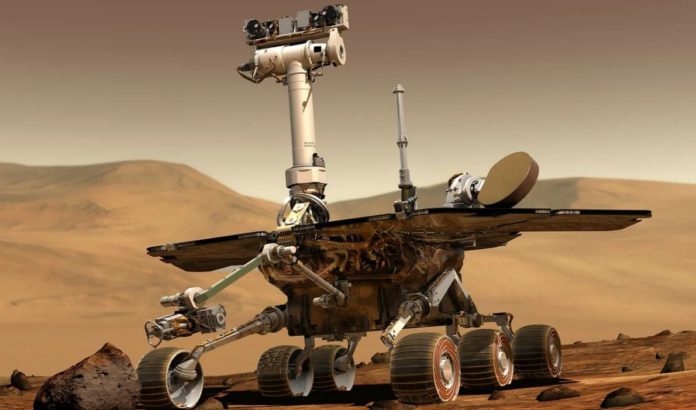The ideal region to host life on the red planet could be located several kilometers below its surface, said a team of researchers from Rutgers University (USA). The finding could contribute to a better understanding of the so-called ‘faint young Sun paradox or faint young Sun problem’, one of the enigmas of astrophysics.
According to the paradox, devised by Carl Sagan and George Mullen, 4 billion years ago, at the beginning of history, our star was much fainter than it is now. It shone at only 70% of its current intensity and its rays were not enough to maintain a liquid ocean on the surfaces of rocky planets.
However, both Earth and Mars show evidence of the existence of water at that time. In particular, the surface of Mars has geological indicators like ancient river beds or minerals related to water.
The study authors suggested that about 4.1 billion to 3.7 billion years ago (the so-called Noachian eon or Noachian Period), the red planet was covered with a layer of ice several kilometers thick. As for water, it could have existed due to the internal heat present under the ice.
“Even if greenhouse gases like carbon dioxide and water vapor are pumped into the early Martian atmosphere in computer simulations, climate models still struggle to support a long-term warm and wet Mars”
explained the lead study author Lujendra Ojha.
The astrophysicist stressed that “the faint young sun paradox may be reconciled, at least partly, if Mars had high geothermal heat in its past.”
Due to the loss of the magnetic field and the thinning of the atmosphere, liquid water could only have been stable at great depths, where “it could have been maintained by hydrothermal activity (heating) and reactions between rocks and water,” Ojha stated.
“In this way, the subsoil could represent the oldest habitable environment on Mars,” concluded the scientist.
On Earth, geothermal heat formed subglacial lakes in West Antarctica, Greenland, and the Canadian Arctic.
